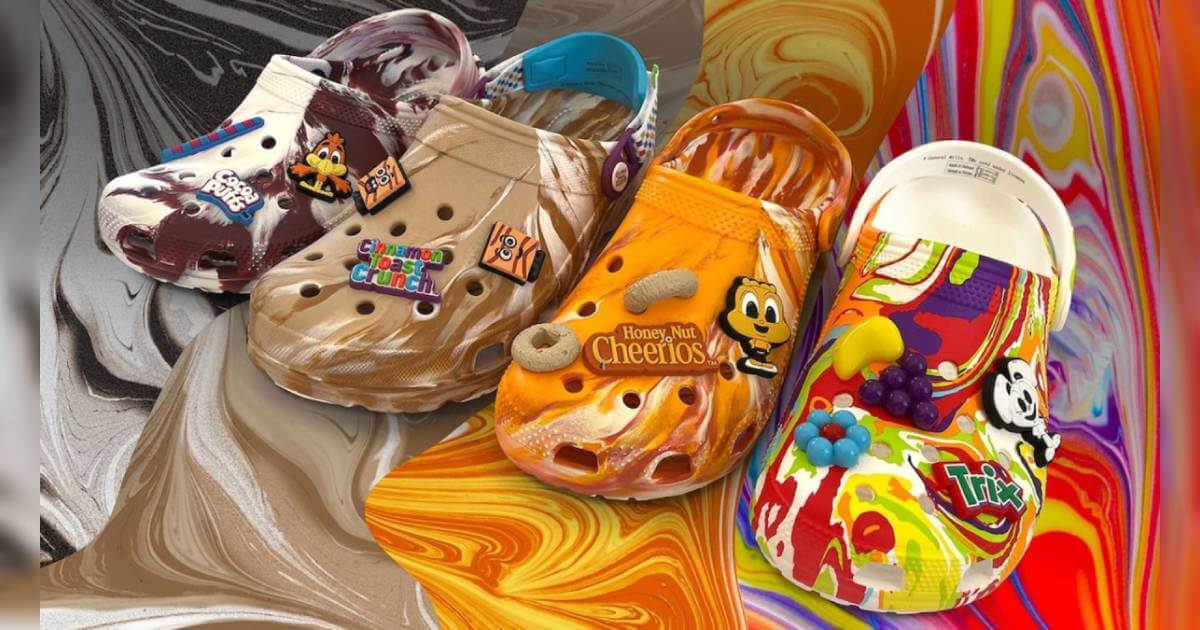Apparel is the Perfect Fit for Licensing

From athleisure to formalwear, licensed apparel of all kinds was in fashion this year. And while the category struggled with excess inventory and clearance sales, collaborations—many of them limited-edition collections—were the perfect fit for brand owners, licensees, and retailers alike. As the industry makes plans for 2023, we’re taking a look back at some of the most significant apparel stories from the past 12 months.
Sizing Up Footwear
Consumers were no longer just wearing their fandom on their sleeve. Increasingly, they were also wearing it on their feet. Branded footwear collaborations, which have a long history in licensing, tried on new partnerships in 2022 that stretched boundaries.
Dr. Martens partnered with the Metropolitan Museum of Art for a collection that paired Japanese artist Katsushika Hokusai’s 36 Views of Mount Fuji series of prints with the footwear brand’s trademark boots. Sketchers brought pop star Ava Max into licensing for the first time, while Crocs introduced more than a half dozen collaborations, including one that brought breakfast cereals’ trademark colors and characters into footwear with Trix, Lucky Charms, and Honey Nut Cheerios.
Inventory Hangover
In a common refrain that spread across nearly every product category, retailers and suppliers struggled with excess apparel inventory as shipping delays and other logistics issues caused seasonal wear to overlap. This was best exhibited by deep discounts available ahead of and during the holiday season.
While sales of apparel were weak in September and October, they rebounded in November. This month, 94% of Nike apparel at Kohl’s was on sale and apparel promotions were “somewhat elevated” at Dick’s Sporting Goods, analysts said. These promotions and excess inventory are expected to spill into 2023.
The New Nostalgia
Everything old was new again this year. For example, apparel connected to singer Dua Lipa’s Nostalgia World Tour mixed a Polaroid photo of her on the front and with a list of tour dates and stops on the back. The aptly named Nostalgia Apparel Co. fielded hoodies and t-shirts with phrases like “Easy Peasy, Lemon Squeezy” and “Tamagotchi Killer Club.”
Tommy Hilfiger, meanwhile, featured images of Britany Spears, TLC, and the Backstreet Boys on “tour” apparel with its logo splashed across the t-shirts. And a 17-piece collection paired New York-based label MadeMe with artist/fashion designer Paul Frank for zip-up hoodies, tartan pajamas, and other apparel featuring the cartoon character Julius the Monkey. In many cases, these brands were applying a 1990s aesthetic to a Gen Z audience that has little or no memory of the era.
Neutral, But Not Boring
Gender-neutral apparel, which has swept through the fashion industry, also took hold in licensing this year. It’s a trend that has been growing for some time, not only with suppliers and consumers, but also retailers—many of whom have ceased having separate boys’ and girls’ sections in stores.
With an increasing number of consumers not identifying within a gender binary—this is especially true for the influential Gen Z demographic—there was a demand for inclusive and gender-neutral products. Some brands like One DNA, Telfar, Tomboy X, Wildfang, and Kirrin Finch have made names for themselves as gender-neutral brands, while labels like H&M, Victoria’s Secret brand PINK, Nordstrom, Tommy Hilfiger, and Abercrombie & Fitch have started their own gender-neutral lines or collections.




